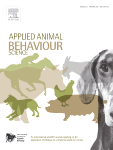Document type scientific article published in Ethology
Authors: Santiago Pintos, Tyrone Lucon-Xiccato, Luisa María Vera, Luis Conceição, Cristiano Bertolucci, Javier Sánchez-Vázquez, Paulo Rema
Preview: While studies on social buffering effects have typically focussed on single species, marked interspecific differences can exist. Here, we conducted an analysis of social buffering of stress response in two of the most extensively farmed fish, the Nile tilapia and the koi carp. Subjects were exposed to a behavioural stress response assay (open-field test) in three conditions simulating increasing levels of social enrichment: isolation, pairs, or shoals of five fish. We obtained five stress indicators from the assay: thigmotaxis(preference for staying in close proximity to the edge/side and avoiding the central open areas, editor's note), freezing(total motionless, editor's note), activity, erratic movements and interindividual distance in conditions with more than one fish. In both species, erratic movements significantly decreased with increasing levels of social enrichment, suggesting a similar social buffering effect. However, other indicators revealed species differences. Koi carp, but not Nile tilapia, showed a socially-mediated reduction in thigmotaxis, whereas Nile tilapia, but not Koi carp, showed a socially-mediated reduction in freezing behaviour. Furthermore, social enrichment determined opposite effects on the activity of the two species: Nile tilapia were more active as group size increased, whereas the opposite trend was found in koi carp. Finally, Nile tilapia showed increased interindividual distance with increasing social group size, whereas no changes were observed for koi carp. Our study indicates that the buffering effects of social enrichment on the behavioural stress response do not completely overlap between different fish species, highlighting the importance of developing finely-tuned species-specific enrichments and welfare indicators.






